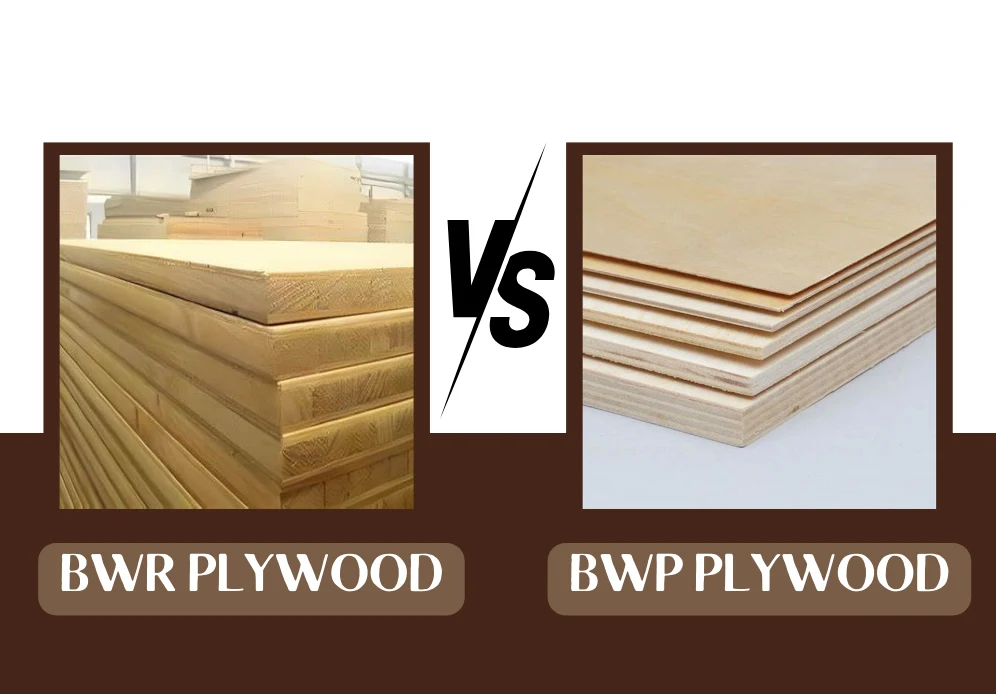When choosing plywood for construction or furniture, understanding the difference between BWR and BWP plywood is crucial. The terms BWR vs BWP plywood refer to different grades of plywood, each with unique properties and uses. This guide will help you make an informed choice between BWR and BWP plywood based on their characteristics, advantages, and ideal applications.
What is BWR Plywood?
BWR (Boiling Water Resistant) plywood is a type of plywood designed to withstand high levels of moisture and heat. It’s commonly used in environments where exposure to water is a concern.
- Water Resistance: BWR plywood can resist water and moisture, making it suitable for humid areas.
- Usage: Ideal for furniture, kitchen cabinets, and other applications where moisture exposure is expected.
- Durability: It offers good durability against swelling and warping.
BWR plywood is treated with chemicals to enhance its water resistance. However, it’s not entirely waterproof and may not be suitable for very high-moisture environments.
What is BWP Plywood?
BWP (Boiling Water Proof) plywood is a higher grade of plywood that offers superior water resistance compared to BWR. It’s designed to withstand prolonged exposure to boiling water.
- Superior Waterproofing: BWP plywood can resist continuous water exposure without swelling or delamination.
- Usage: Used in applications like marine construction, outdoor furniture, and areas with extreme moisture conditions.
- Durability: Offers excellent durability and strength in harsh conditions.
BWP plywood is ideal for areas where maximum water resistance is required. It is treated with advanced preservatives and adhesives to enhance its performance under extreme conditions.
BWR vs BWP Plywood: A Comparative Analysis
BWR and BWP plywood are both durable, but they serve different purposes. Understanding their differences helps in selecting the right type for your project.
1. Water Resistance
- BWR Plywood: Resistant to moisture and ideal for high-humidity areas but not completely waterproof.
- BWP Plywood: Superior water resistance, and can handle prolonged exposure to boiling water.
2. Durability
- BWR Plywood: Provides good durability against normal conditions but may degrade over time in extreme moisture.
- BWP Plywood: Highly durable and maintains strength and integrity even in harsh conditions.
3. Applications
- BWR Plywood: Suitable for indoor use, including kitchens and bathrooms, where moisture is a concern.
- BWP Plywood: Best for outdoor applications, marine environments, and areas with severe water exposure.
4. Cost
- BWR Plywood: Generally less expensive than BWP plywood, making it a cost-effective choice for many projects.
- BWP Plywood: More costly due to its advanced water-resistant properties and durability.
Pros and Cons of BWR Plywood
BWR plywood offers several advantages, such as being more affordable and providing good moisture resistance for areas with occasional water exposure. It’s versatile enough for various indoor applications, making it a popular choice for budget-conscious projects.
Pros Of BWR Plywood
- Affordable: More budget-friendly than BWP plywood.
- Moisture Resistance: Good for areas with occasional moisture exposure.
- Versatile: Suitable for a range of indoor applications.
Cons Of BWR Plywood
- Limited Water Resistance: Not suitable for constant exposure to water.
- Potential for Warping: Can swell or warp under extreme conditions.
Pros and Cons of BWP Plywood
BWP plywood excels in superior water resistance and durability, making it ideal for extreme conditions. However, it comes at a higher cost and may be harder to find compared to other plywood types.
Pros Of BWP Plywood
- Excellent Water Resistance: Can handle continuous exposure to water.
- High Durability: Maintains integrity in harsh conditions.
- Long-Lasting: Ideal for outdoor and marine applications.
Cons Of BWP Plywood
- Higher Cost: More expensive due to enhanced properties.
- Limited Availability: Not as widely available as BWR plywood.
Choosing Between BWR And BWP Plywood
Choose BWR plywood for interior and semi-exposed areas, as it is water-resistant but not fully waterproof. For outdoor or fully exposed areas, BWP plywood is ideal due to its superior waterproofing and durability.
1. Consider The Environment
- BWR Plywood: Choose for indoor use or areas with occasional moisture.
- BWP Plywood: Opt for outdoor use or environments with high water exposure.
2. Budget
- BWR Plywood: Better for budget-conscious projects.
- BWP Plywood: Worth the investment for demanding conditions.
3. Project Requirements
- BWR Plywood: Suitable for most home furniture and cabinetry.
- BWP Plywood: Best for boats, exterior applications, and extreme conditions.
Installation Tips For BWR and BWP Plywood
- Surface Preparation: Ensure surfaces are clean and dry before installation.
- Adhesives: Use water-resistant adhesives to complement the plywood’s properties.
- Sealing: Consider sealing edges and joints for added protection.
Maintenance Of BWR And BWP Plywood
- Regular Cleaning: Wipe down surfaces with a damp cloth.
- Inspect for Damage: Check for signs of wear or moisture damage.
- Repair as Needed: Address any issues promptly to maintain durability.
Conclusion
In the debate of BWR vs BWP plywood, your choice will depend on your specific needs and conditions. BWR plywood offers good moisture resistance and is suitable for many indoor applications. BWP plywood, on the other hand, provides superior water resistance and is ideal for environments with extreme moisture exposure. Consider factors such as cost, durability, and application requirements to make the best choice for your project.
Frequently Asked Questions? (FAQs)
What Is The Main Difference Between BWR And BWP Plywood?
BWR plywood offers good water resistance, while BWP plywood provides superior waterproofing and is suitable for extreme conditions.
Can BWR Plywood Be Used In Outdoor Applications?
BWR plywood is better suited for indoor use or areas with occasional moisture, not for continuous outdoor exposure.
Is Bwp Plywood Worth The Higher Cost?
Yes, if your project requires maximum water resistance and durability, BWP plywood is worth the investment.
How Should I Maintain BWR or BWP Plywood?
Regular cleaning, inspection for damage, and timely repairs will help maintain the plywood’s condition.
Can I Use BWR Plywood In A Bathroom?
Yes, BWR plywood is suitable for bathrooms where there is high humidity, but BWP plywood is a better choice for extreme moisture conditions.

